Innovation should be the most important ability for future enterprises
Editor’s note: This article is from WeChat public account hundun-university) , author: University of chaos.
When Schmidt became the chairman of Google, he thought that he would at least prepare a spacious and bright office for me. I used to be the CEO of a large company. It turned out that there was no place for him at all.
What are the characteristics of your office layout?
Does Google ’s innovative mechanisms only exist after they are so powerful today?
Teaching teacher | Chao Ruo University preparation leader Zhao Ruoyu
Edit | Rain fever

Innovation should be the most important capability for future enterprises. Today I want to share with you the evolutionary innovation of Google.
Do you have such a question: A company as big as Google has the best market value in the world, does analyzing it make sense to us? We may still be in an entrepreneurial company, or even live on the line of life and death, are some of Google’s mechanisms suitable for us?
Actually, the reason why Google ’s innovation is shared with you is because Google ’s innovation stems from the mechanism it formed during the initial stage.
The mechanism of this start-up period has continued to this day, and has kept Google very innovative.
So, although Google is so huge today, many of its practices and underlying logic still work for us. We will start from here.

Although the idea is a “master” patent but it comes from the fragmentation of ideas
What is the underlying logic of Google ’s innovation?
If you want to clear this question, it is very important if you only stand in the perspective of the enterpriseDifficult. We may need to enlarge the scale to use a long focal length perspective.
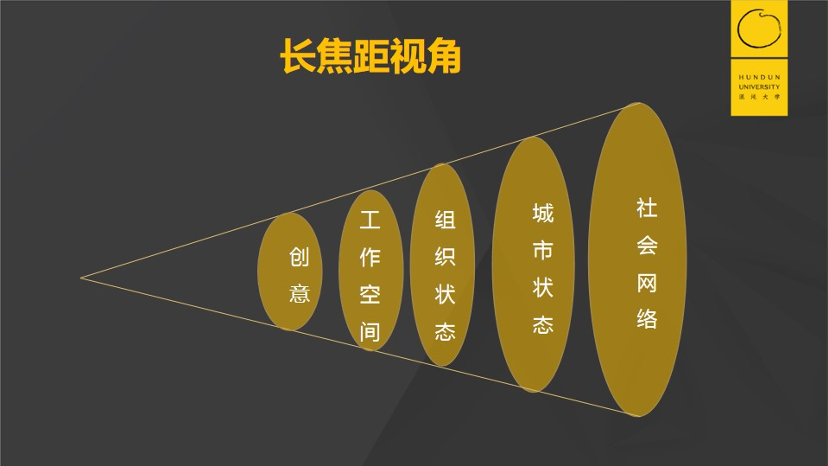
Jump away from innovation first, then from the working group that created this innovation, or even from this city and go back to the entire human society.
With this spirit of exploration, I was very fortunate to have hit a book that happened to look at human innovation from a telephoto perspective. This book is called “The Birth Process of Great Ideas”. The author Steven Johnson is known as Darwin in the scientific and technological world. He studied the underlying logic of the 200 greatest innovations that have affected humankind for the six hundred years from 1400 to today.
These innovations can be put into a matrix:
The above is the market behavior, and innovation is to make money, generally in the enterprise;
The following are non-market activities, not intended to be sold, and may occur in laboratories and R & D institutions.
The individual on the left is an individual, which can be understood as a closed innovation, which may be a scientist or a laboratory or institute;
The network on the right is called open innovation. It takes out ideas and collides with other ideas, and then generates new ideas.

Let ’s look at the regularity of these six hundred years of evolution.
In the two hundred years from 1400 to 1600, the most innovation occurred in Region 3, which is non-market individual innovation. At that time, the information was not sufficiently developed, and even the cities were not particularly developed, so innovation was the patent of those creative masters.
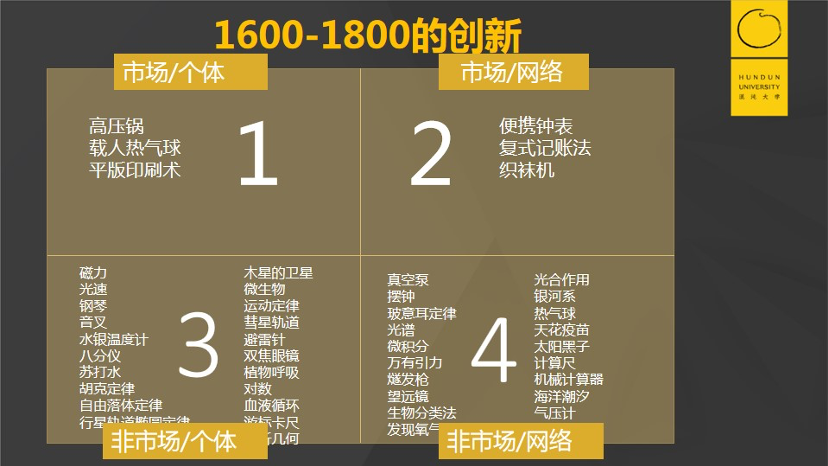
In the two hundred years from 1600 to 1800, the number of innovations in the two non-market areas below far exceeded the previous two hundred years.
The market behavior is still very innovative in order to make money.
In the two hundred years from 1800 to the present, the overall number of innovations has increased several times over the past.There is still more innovation in market behavior than in the market.
Moreover, there are more networks and open innovations in Region 4 than closed innovations. This is a special phenomenon. It has the most innovations, far more than the other three regions.
What does this tell us? Next, we will reveal the four core laws of these six hundred years together:
l Revelation 1: About the idea itself
What do we understand about innovation? Was it a flash of light, or sweating hard work? None of Steven Johnson ’s answers.
Creativity is a patent of people who love creation, but it is a piece of thought pieces spliced together and slowly born over time.
Everyone looked back at many human innovations in the past, such as the World Wide Web, which actually took 10 years. At first, it was not intended to be constructed like this, but it was an organization that the European Nuclear Laboratory inadvertently built to promote the exchange of ideas among colleagues, and then slowly developed into the World Wide Web today.
l Inspiration 2: About the process of innovation and development
What does the innovation process look like?
Innovation is a process in which different ideas collide, graft together, and even mutate and make mistakes.
Many ideas may seem to have nothing to do with each other, but in the end, something new is generated. For example, the nursery box we use today is actually an incubator derived from chickens. Therefore, innovation is a process of continuous splicing of creativity.
l Revelation 3: About innovation management
What kind of mechanism is conducive to stimulating innovation? The author’s research shows:
Creativity often happens in a state of “out of control”.
It’s not artificially controlled, but let the creativity flow freely, then collide with each other, or even make mistakes, and finally may produce a lot of huge innovations that affect humanity.
l Revelation 4: About the environment of innovation
What kind of environment is conducive to innovation? This is especially meaningful for our business.
If you look at which city in the world has the strongest innovation, you will find out what characteristics such cities as Silicon Valley and Shenzhen have? The immigrant population is particularly large, the diversity is particularly large, and the various professions are particularly large, and everyone here has a particularly strong innovative spirit.
The environment is open, inclusive, and diverse, with frequent exchanges, and cross-border thoughts collide violently and splice together, the more conducive to innovation.

What is the relationship between the four elements of innovation and organizational elements?
The creative person is the employee, the creative creation process is the process, the creative management method is the mechanism, and the environment is basically the organizational culture.
Let ’s use this innovative model to review and deconstruct Google ’s innovation.

He was originally coming with creativity The result was scared by the momentum of your office
l Staff (Creative)
Let ’s start with an employee ’s perspective and look at this factor that drives Google ’s innovation.
If you have read the book “Redefine the Company”, there will be an impressive word, the creative elite. Google especially cares about hiring such creative people.
For the requirements of the creative elite, I have listed a lot of entries. Let’s see which one we have and which one we don’t have. You can also use these criteria to evaluate your employees. In fact, many requirements are very high.
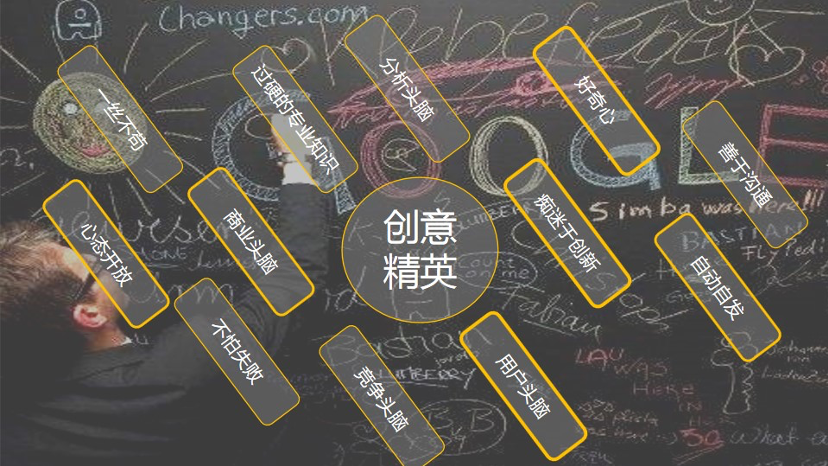
Google made such a request, then almost all of Google’s management behavior is to inspire these creative elites.
For example, it requires that the most important thing for managers is recruitment. Then, after you recruit this person, he will not be in your charge, but will be able to flow freely within the organization and choose his favorite task.
What managers do is to create the best environment for these creative elites, let them feel the significance of this job, and then stimulate their passion, and finally help them succeed.
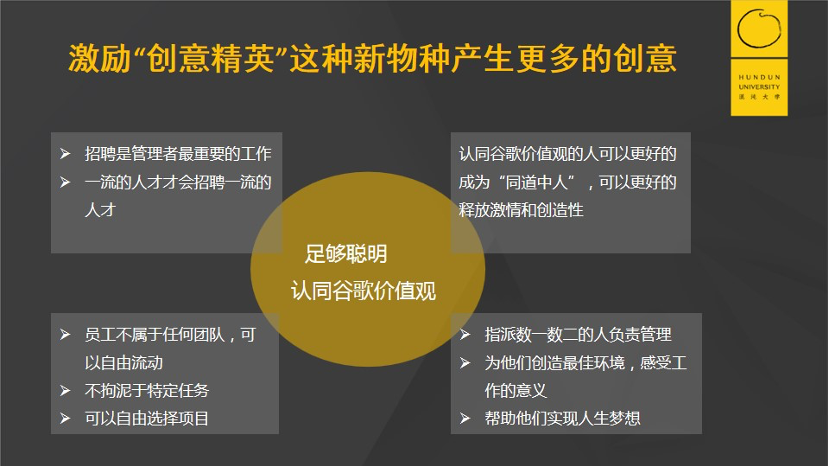
You can stop here and think about our company, what is your attitude towards employees? Does it require employees to obey, or does it require employees to work hard, or does it require employees to playCreativity and passion?
As a manager, is your role to manage employees or create conditions for employees to succeed?
Everyone thinks, the idea of management and obedience may be the idea of 100 years ago. Therefore, Professor Shanyou said that organization is a living body, and employees are no longer tools, but the purpose itself. When we regard employees as the goal itself, what the organization has to do is to motivate and inspire everyone.
I would like to sum up with a sentence from Bill, the head of Google ’s Engineering and Infrastructure Department. He said: “My role is the glue of interpersonal relationships, connectors, aggregators of many points of view. Dictator. “Everyone understands.
l process (process)
When you think of the process, what do you see in your mind? Should it have a rigorous step, and then every step down may be approved?
But the Google process we are going to talk about is the process that is the least like the process.
If the growth process of an idea is divided into three core stages, it can be roughly divided into: germination stage, growth stage, and fruit picking stage.
At each stage, the core problem to be solved is different.

In the embryonic stage, your mission is to inspire and inspire more creative ideas. This requires diverse employees to participate in the innovation process from the bottom up.
In the growth stage, the most important thing is to let the opinions flow freely, splice and graft with each other, and then produce mutation.
In the fruit-picking stage, who you allocate resources to and which innovations are most valuable to the organization are the problems to be solved.
We can follow this process and take a look at Google ’s approach:

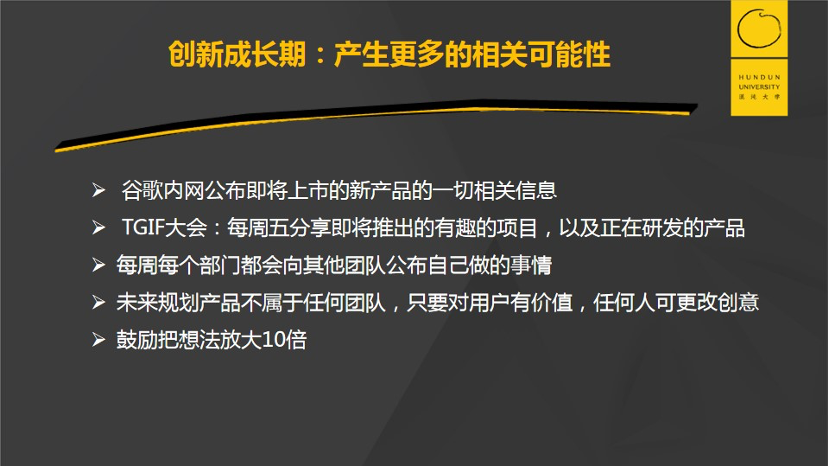
At the fruit picking stage, Google didThe organization of creative creativity is too much, so resources must be invested in the most effective for the organization.
For example, if the project is mature to a certain stage, you can enter the laboratory of Google X and then incubate. At the same time, for those ineffective projects, there is a mechanism called cleaning, which will clear them out, and then devote resources to the most valuable projects that can change people around the world.
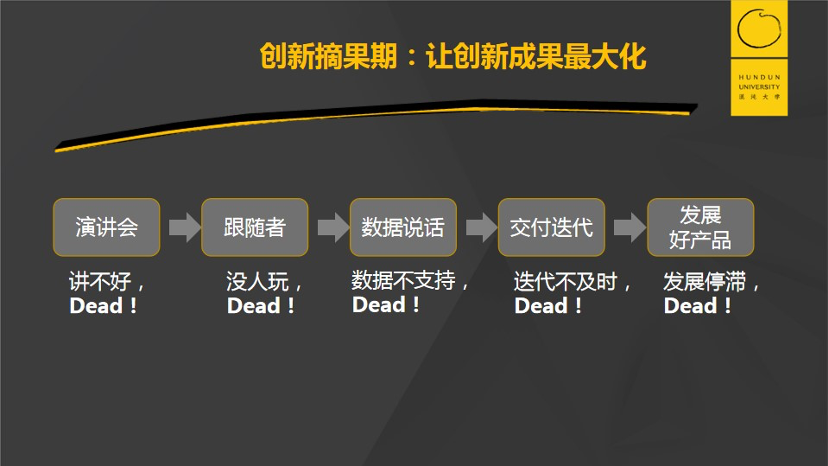
So, if you want to survive a good project, you may have to go through a series of processes. For example, if you want to preach well, you need someone to follow, and then you have to use the running data to speak. If the data does not perform well, you will die. If the data feeds back, you will die if you do n’t iterate quickly.
At Google, it is very difficult to keep an innovation.
l mechanism (management)
How does it inspire these innovations? I share 5 with you:
1. 20% free time
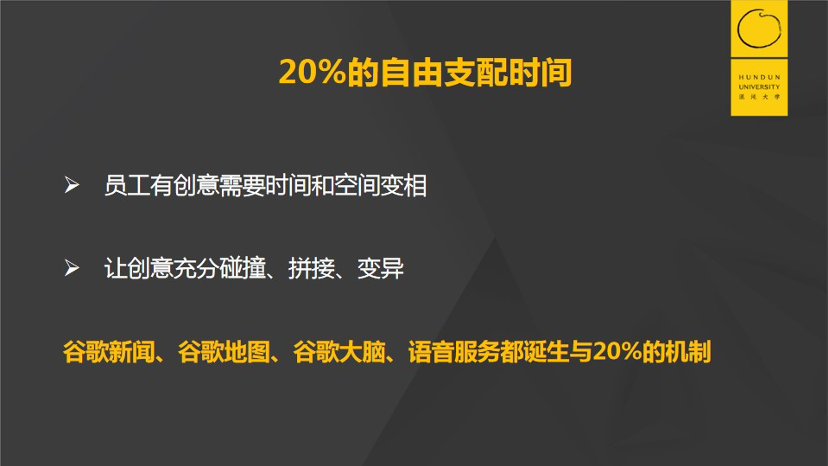
Many companies still use the time and attendance system today, hoping that employees will always be in working condition. But from the perspective of innovation, many entrepreneurs are produced in their spare time.
Google provides 20% of free time, hoping that employees will have the opportunity to take the inspiration in his mind and collide with different people, generating more valuable sparks.
2. OKR working method
Comparing OKR and KPI, I think it is very important.
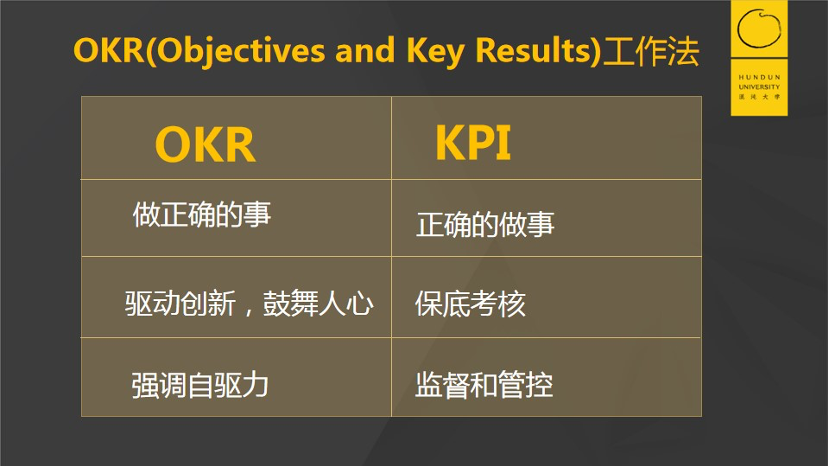
KPI basically comes from the idea of control. Every employee has to talk to the company every year, hoping to reduce their own KPI; while the company is desperately asking employees to increase KPI. So a few years ago there was an article saying that performanceism killed people and it destroyed Sony.
What is OKR more? It emphasizes from the bottom up, and hopes that everyone can find the right thing based on the goal and motivate peopleHeart, self-driving.
Many companies have used OKR but it is not used well. In fact, it is not that this tool is not good. The important reason may be that your organizational management foundation does not match OKR.
3. The 70/20/10 principle
70% of the resources are allocated to the core business;
20% of the resources are allocated to emerging products (new business of the original business);
10% of the resources are invested in new products (new and crazy ideas).
4. Open platform

Everyone will find that Google actually creates an open ecology, which will connect more innovative resources. Google empowers these innovation resources, and then these innovation resources will in turn promote the development of Google’s entire innovation ecosystem.
At the same time, it has a very good connection with universities and external research institutions. It may invest hundreds of scientific research projects every year, and it will invite the most outstanding scientists to Google for vacation.
One is to bring in good ideas from the outside, and the other is to push Google to connect with the outside.
Everyone knows the theory of entropy increase. Closed systems are bound to die. Only open systems can dissipate this energy.
5. Beautifully defeated
Some projects are indeed unsuccessful, and Google encourages “fast failures.”
Google+ is to fight against Facebook, but after hard work, its daily life is up to 50 million. Although it is already good for other companies, it is meaningless to Google, so it is decided to turn off Google+ .
Turn off, the most important thing is to absorb experience from this failed project, for example, some derivative technologies can be left to use in other products, and social products may have accumulated rich user and marketing experience.
So, you will find that it is not control, but to ensure that good ideas can get the right resources.
l culture (environment)
First, let ’s take a look at Google ’s Zurich office area. It looks like everything, just like the office.
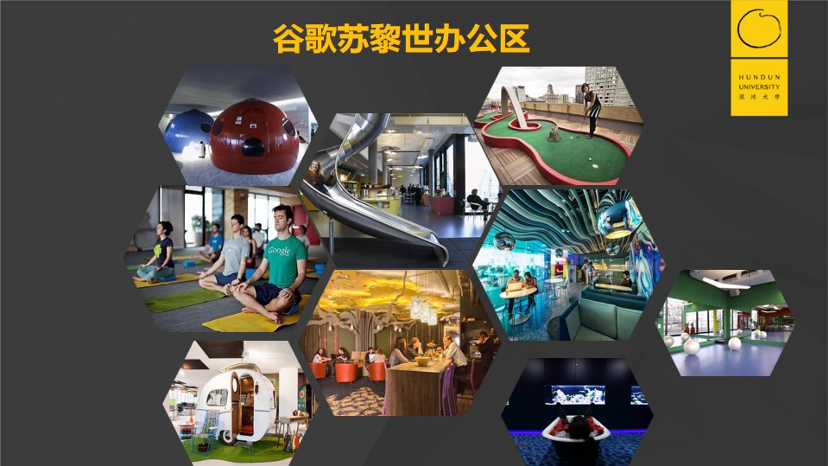
For example,It has a golf course, an aquarium, a coffee shop, a meditation room, billiards, and a particularly cool-slide, you can slide directly from the third floor to the first floor.
Why do you want to make your office look like this? In fact, there is something behind it. The creation of innovation has a very important relationship with the environment.
Environment should be relaxed, fun, and make employees happy, and then may inspire a lot of creativity. At the same time, this environment can inspire different people to communicate together.
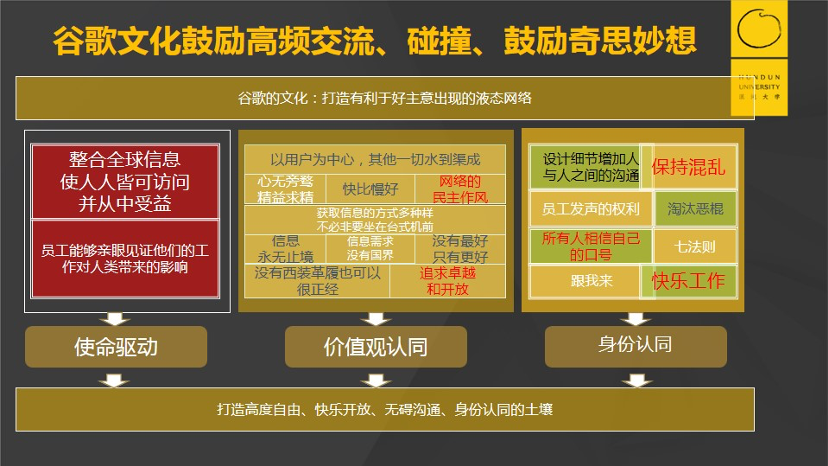
After reading it, did you make a decision to go back and remodel your office area?
When Schmidt became the chairman of Google, he thought he had to prepare a spacious and bright office for me. I used to be the CEO of a big company. It turned out that there was no place for him at all.
So, what are the characteristics of your office layout? Who has given the best position? Is it the boss or a huge office, and then the employees are in awe immediately after entering the office? He might have gone with an idea in his heart, but the idea was frightened by the momentum of your office.
I think that Google ’s environment is also the external presentation of its internal philosophy.
I hope to put those very scattered points into the elements of the organization. You can compare these elements and think about the underlying logic behind it. Take this underlying logic and rethink our own innovation.

The level of consciousness of an organization It is impossible to exceed the development stage of leader awareness
In order to make everyone feel more innovative about Google, I want to share a small case.
This case is very old. Not long after Google started its business, founder Larry Page accidentally searched Google for an entry, and related ads appeared. He found that the advertisement had nothing to do with the words he searched for.
Larry Page was quite angry. If your founder sees such a situation in your business, what would you do in general? Scolding? Convene staff meetings,Praise, criticize, criticize?
However, Larry Page did not do this. There was a bulletin board inside, and he printed out the advertisement and posted it on it, saying nothing.
And then a colleague—today ’s head of Google ’s artificial intelligence—after seeing this, felt that it was indeed not very good, which was completely disproportionate to Google ’s mission. So he called several colleagues and used the rest time to create an algorithm, and then this algorithm became the most important underlying logic of Google search engine advertising …
No one controls this process, nor does it have a strict process. Ideas are generated spontaneously from below, which results in great benefits for Google.
So, are these innovations such as Google’s only today? Actually not, their innovation mechanism really continued the state of early entrepreneurship that year.
In the early days, they introduced a special cow CEO, but it is particularly rare that the CEO did not bring the management practices of mature companies, but quietly observed how these creative elites are innovating, and then go more Follow their working methods to construct Google’s management model.
Okay, finally, let ’s jump out and see what insights and enlightenment these questions bring us, what we can do when we go back. Still around the four core dimensions just now:
l truly regard employees as the most important asset

l transform traditional organizations
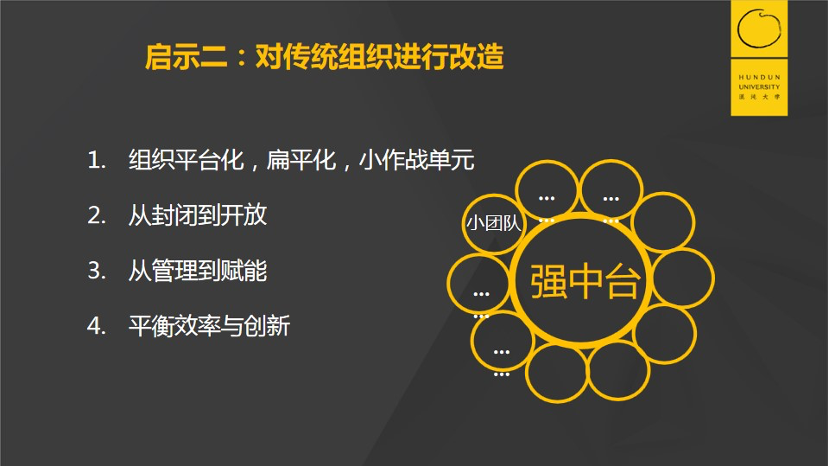
The most typical organization of the Internet today is the strong center, and then there are a lot of independent small units.
In a sense, efficiency and innovation are a contradiction, and management may stifle innovation. So our organization today is going to review the two and balance each other well. Can you cut some “achievements”?
l has an innovative mechanism
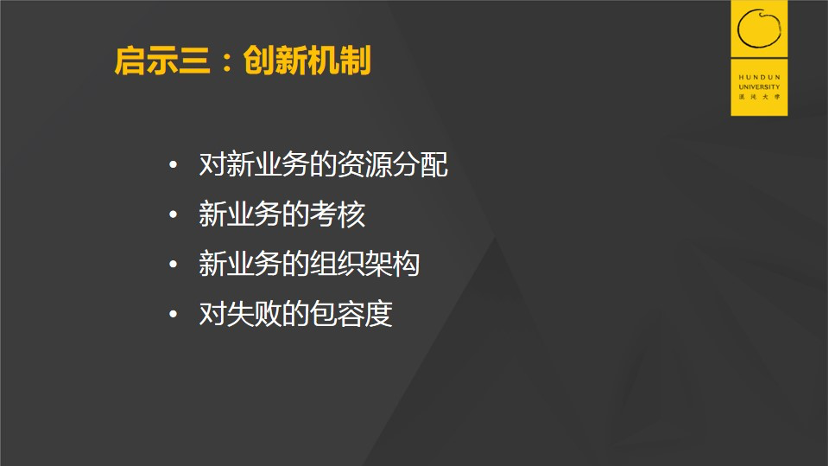
In the enterprise, is your new business attributed to a very mature old business department? If this is the mechanism, it is difficult for new businesses to obtain sufficient resources, and the success rate is very low.
Many companies’ evaluation mechanism for new business will remain at creating a lot of sales revenue and profits, which is actually contrary to the growth of this new business.
I used to tell a story many years ago. A department spent a total of about $ 20 million to develop a new business. Finally, this new business proved to fail.
According to past experience, the person in charge wrote a resignation letter to the CEO. As a result, the CEO’s reply is very classic: I have already paid you 20 million dollars in tuition, how can I let you go?
Is the CEO calling that person to settle accounts with him? No. This sentence actually reflects the organization’s tolerance of innovation failure. He wanted to refine the laws behind this failure, which can be used for other innovations.
lDeveloping a culture conducive to driving innovation
I will give you an evaluation model, compare these two dimensions, and evaluate which quadrant your organizational culture is in:
A dimension is flexible and free, or stable and controlled;
Another dimension focuses on internal and integration, or external and differences.
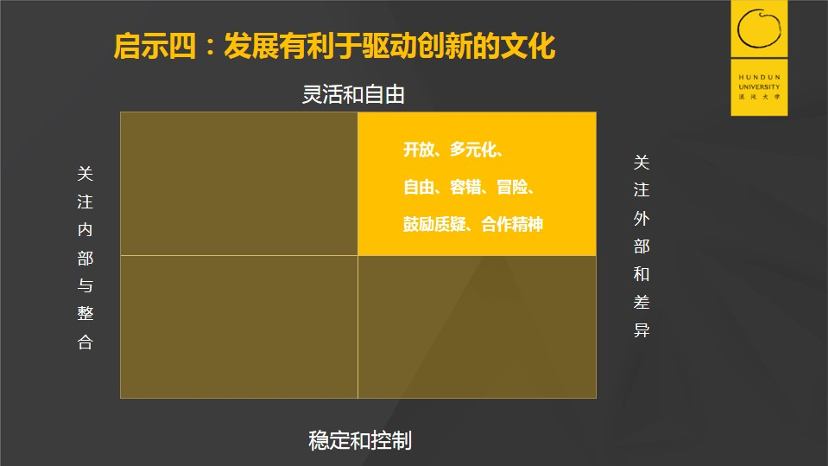
According to Google ’s approach, in order to inspire innovation, the culture that this organization should build is biased towards flexibility and freedom, as well as external orientation and differentiation.
So, in your organization ’s core values, there should be words like: openness, diversity, freedom, encouragement of risk, etc.
l Leader consciousness evolution is the prerequisite for organizational evolution
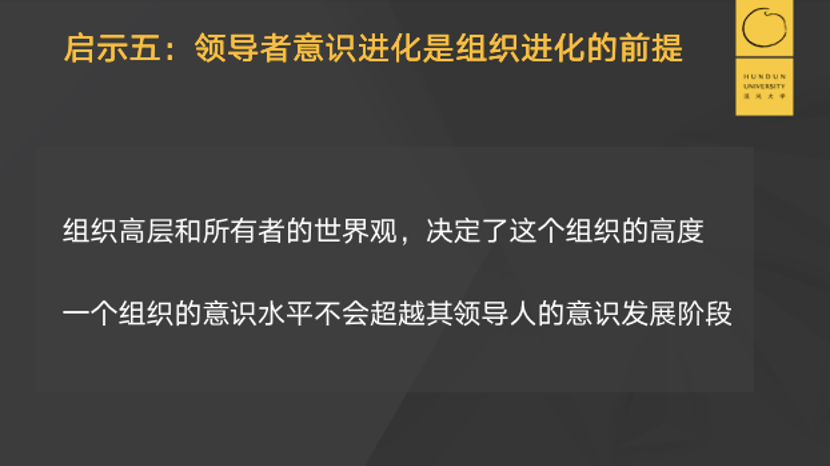
Finally, I think what an enterprise looks like is, in a sense, an extension of the founder ’s internal philosophy.
The worldview of the top management and the owner of the organization determines the height of the organization. The level of consciousness of an organization cannot exceed the stage of leader’s consciousness development. The very root part may be the evolution of the consciousness of the founder and the senior.
The current epidemic has traumatized many industries and made many things very clear. You can reflect on it. We start a business, we do management, we build today’s organization, what is the underlying assumption? Based on these assumptions, what is our underlying logic?
When were our assumptions and underlying logic born, and based on what experience? Are the basic hypothetical environments still there? If those circumstances are gone, those assumptions may need to be changed. (End)